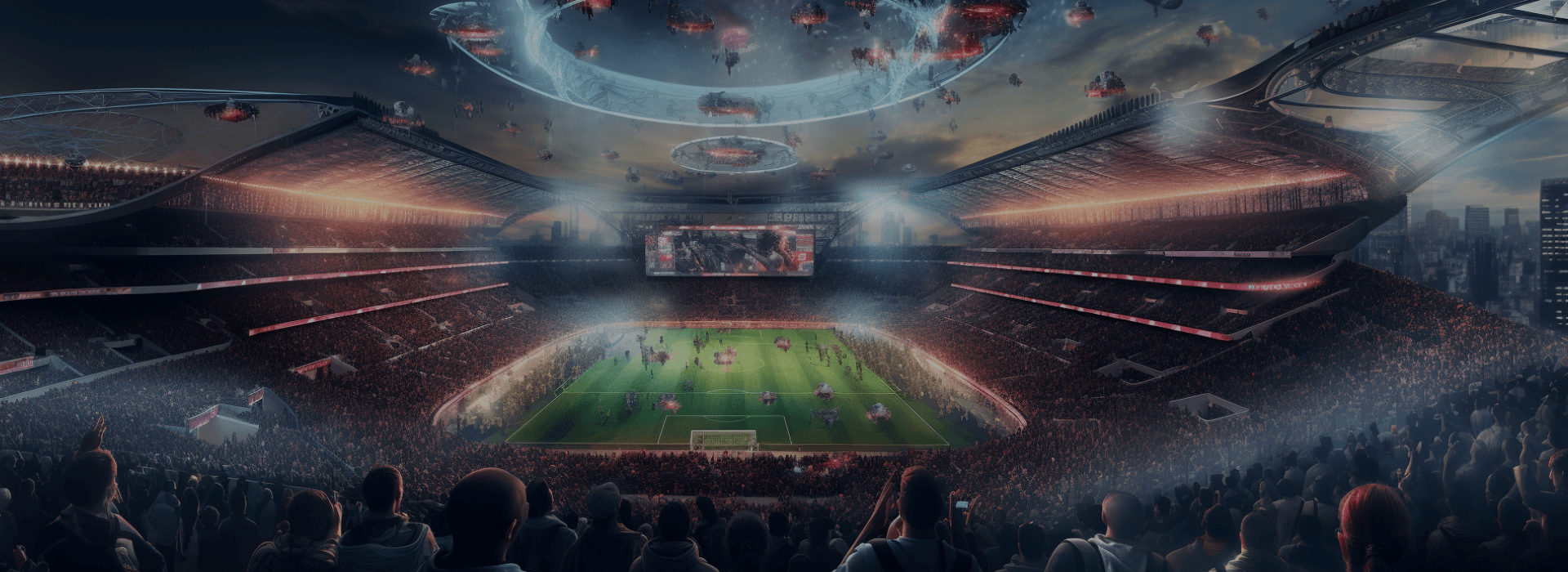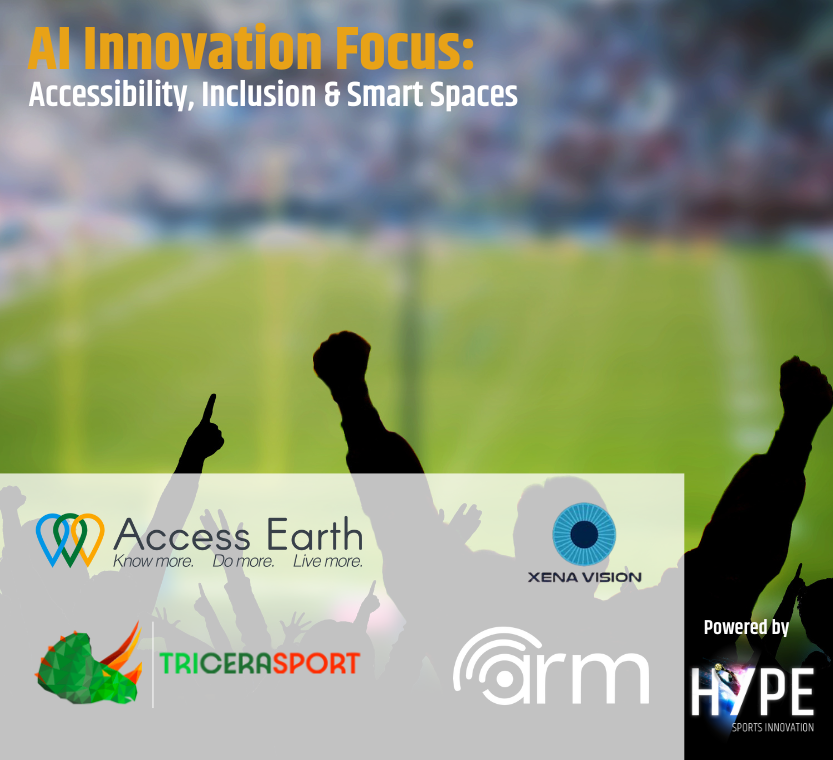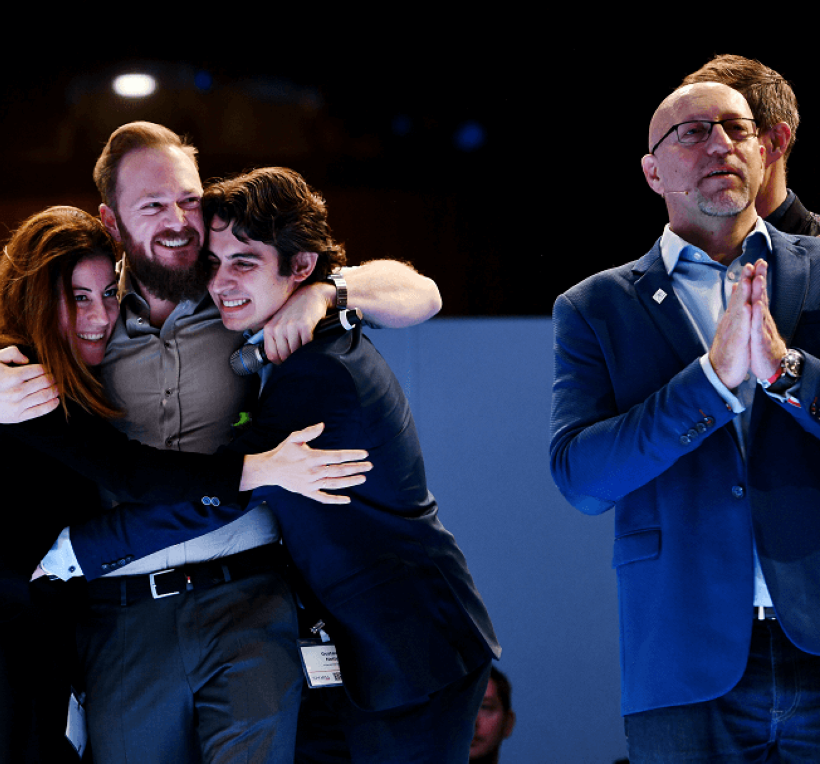

AI Innovation Focus: Accessibility, Inclusion & Smart Spaces
3 Min Read
AI Innovation Focus: Accessibility, Inclusion & Smart Spaces
In today’s sports landscape, the physical venue is no longer just a passive setting but a living, intelligent environment. As expectations for inclusive, accessible, and safe experiences grow, AI-driven startups are stepping in to transform how we design, manage, and interact with these spaces. Whether it’s helping fans with disabilities navigate a stadium, turning spectators into active participants, or identifying safety risks in real time, these solutions ensure that every fan can engage meaningfully and safely.
Below are some of the standout innovators driving accessibility and inclusion through smart venue technology.

Advanced Radio Mapping (https://www.advancedradiomapping.com/)
What they do:
- Uses passive Wi‑Fi sensors and edge computing to anonymously track crowd movement, dwell times, and footfall across event zones.
- Provides real-time heatmaps and behavioral insights without collecting personal data (PII), ensuring full compliance with GDPR and privacy standards.
- Integrates with venue dashboards for immediate operational decisions (e.g., redirecting traffic, improving queue management).
Why it matters: ARM transforms sports venues into adaptive, responsive environments. Its anonymized, real-time insights empower event organizers to improve fan flow, reduce bottlenecks, and optimize sponsor zones and fan experiences. By understanding exactly how and where people engage, venues can unlock new commercial value while enhancing comfort, safety, and inclusion for all attendees including elderly fans, those with anxiety, or fans with mobility needs.

Tricerasport (https://tricerasport.com/)
What they do:
- Offers “Club” and “Elite” apps that gamify training and live events, enabling fans to vote, predict, cheer, and interact with on-field activities in real time.
- Includes tournament modules, virtual challenges, and crowd-driven activations that let users impact match momentum.
- Used in community-driven leagues as well as youth development programs to connect fans, families, and amateur players.
Why it matters: Tricerasport breaks down traditional barriers between performer and audience by turning spectators into “spect’actors.” This encourages active engagement from younger fans, underrepresented communities, and fans with disabilities, giving them a stake in the action. For clubs and organizers, it builds deeper emotional loyalty and fan retention through inclusive, participatory experiences that go far beyond passive viewing.

Access Earth (https://www.accessearth.com/)
What they do:
- Operates the Access Ready platform to audit, verify, and improve venue accessibility using a blend of AI and community-sourced data.
- Analyzes satellite imagery and crowd submissions to highlight accessible features (e.g., parking, elevators, restrooms) and flag missing or non-compliant infrastructure.
- Provides live feedback tools via QR codes placed on-site and central dashboards to monitor accessibility KPIs over time.
Why it matters: Access Earth equips stadiums and sports facilities with the tools to move from reactive compliance to proactive inclusion. By creating a real-time feedback loop and actionable accessibility data, venues can continuously evolve and adapt to the needs of all fans including wheelchair users, those with visual or hearing impairments, and aging populations. It transforms accessibility from an afterthought into a living commitment to equity.

Xena‑Vision (https://xena-vision.com/)
What they do:
- Uses real-time video-based AI analytics to detect early signs of crowd panic, aggressive behavior, unattended objects, or medical distress.
- Integrates with existing CCTV infrastructure and venue response systems to trigger instant alerts for on-site teams.
- Supports multilayered analysis for both event security and fan well-being, scalable to stadiums, arenas, and large public gatherings.
Why it matters: Xena‑Vision acts as a digital safety net, scanning crowds continuously to detect threats before they escalate. This is particularly valuable for safeguarding vulnerable groups, families with young children, elderly fans, or individuals with sensory sensitivities, who may not be able to seek help quickly. The result is a more trustworthy and inclusive space, where fans can focus on enjoying the game knowing that someone, or something, is watching out for them.
Key Takeaways
- Data-driven design: ARM empowers smarter space utilization, helping venues plan around real fan behavior.
- Inclusive interaction: Tricerasport invites all fans to play an active role in the live experience, regardless of ability or age.
- Accessibility intelligence: Access Earth gives venues a dynamic way to audit and improve accessibility in real time.
- Proactive protection: Xena-Vision elevates fan safety, offering peace of mind through real-time crowd monitoring and alerting.
Bottom Line
These startups are leading the transformation of sports venues into more intelligent, inclusive, and human-centered ecosystems. Whether it’s making sure a young fan in a wheelchair can navigate the stadium independently or allowing a shy teenager to participate in the game from their phone, these innovations demonstrate how AI can close the gap between access and experience. The future of sports isn’t just more digital, it’s more equitable.




Comments